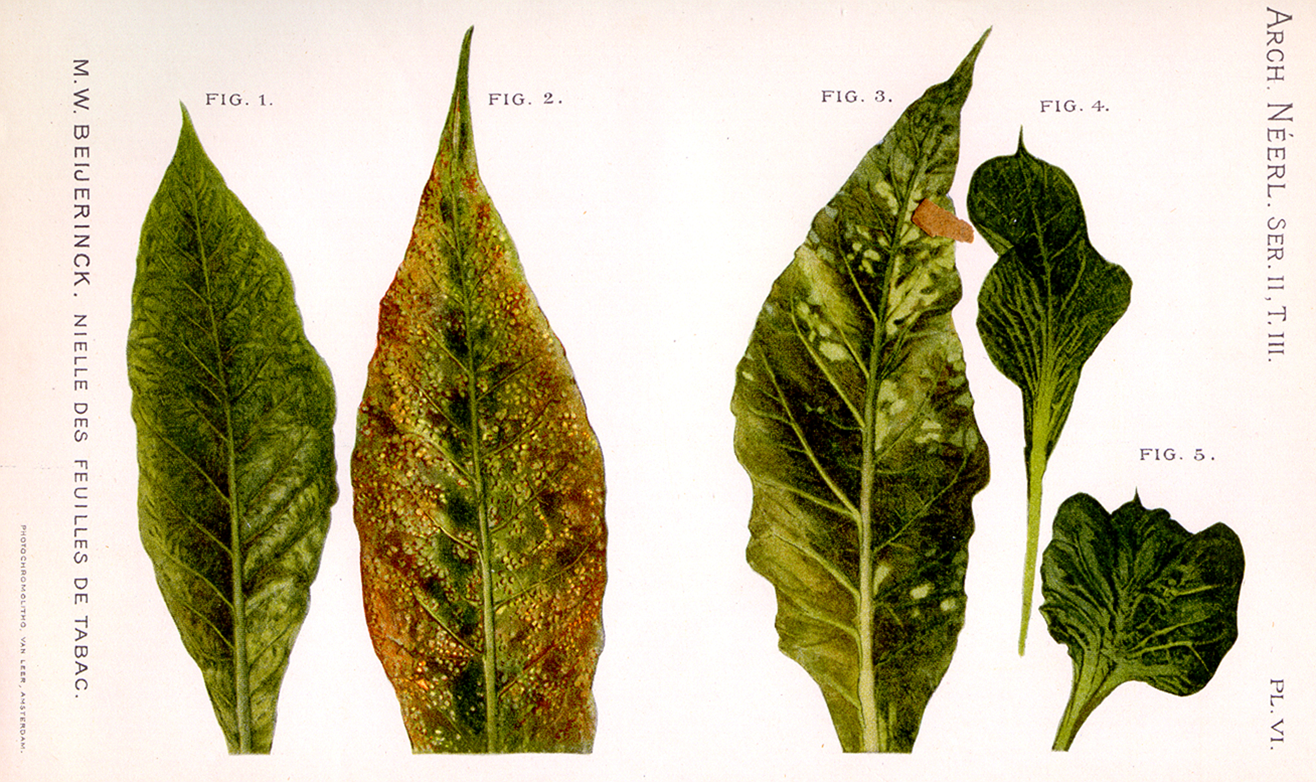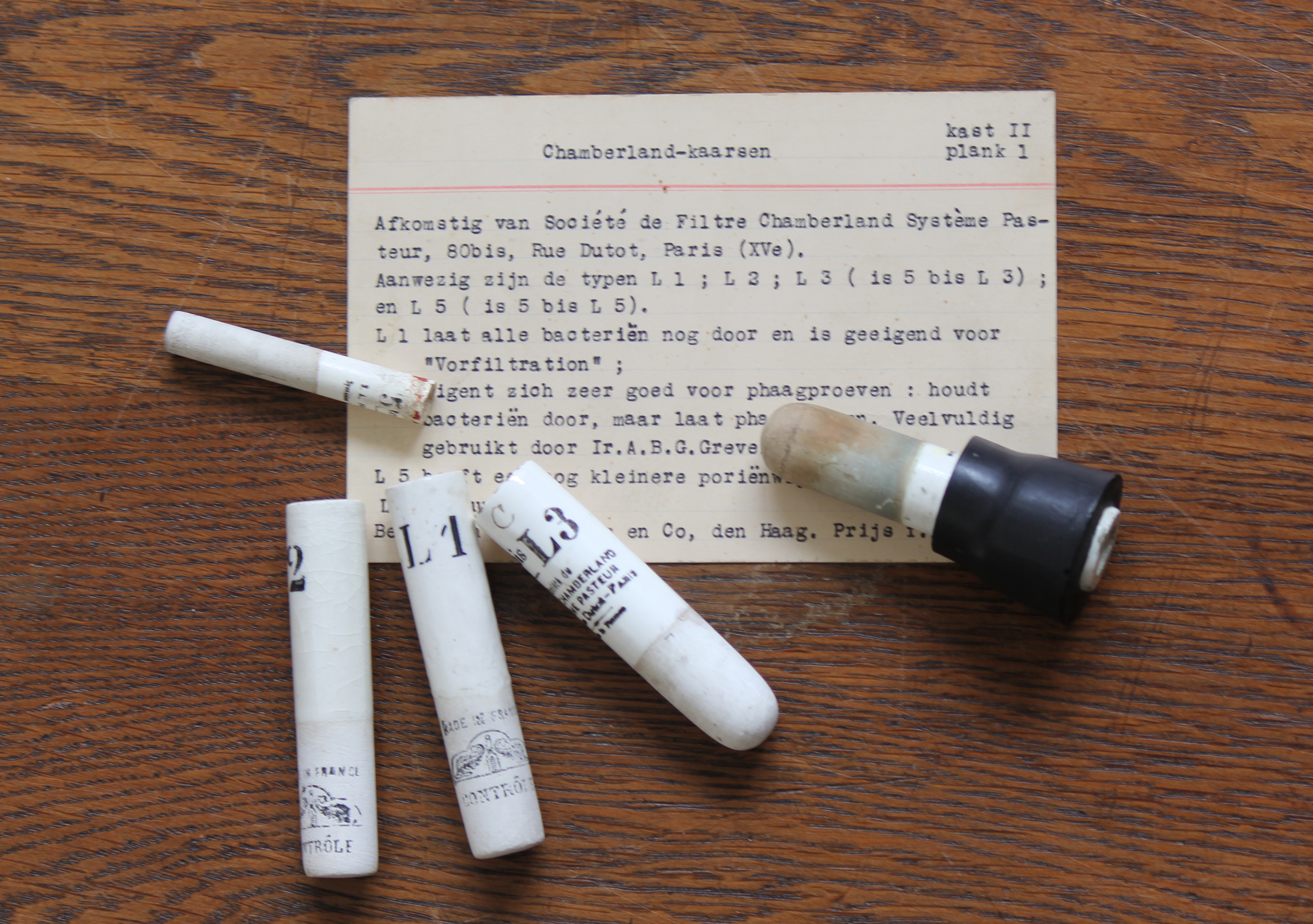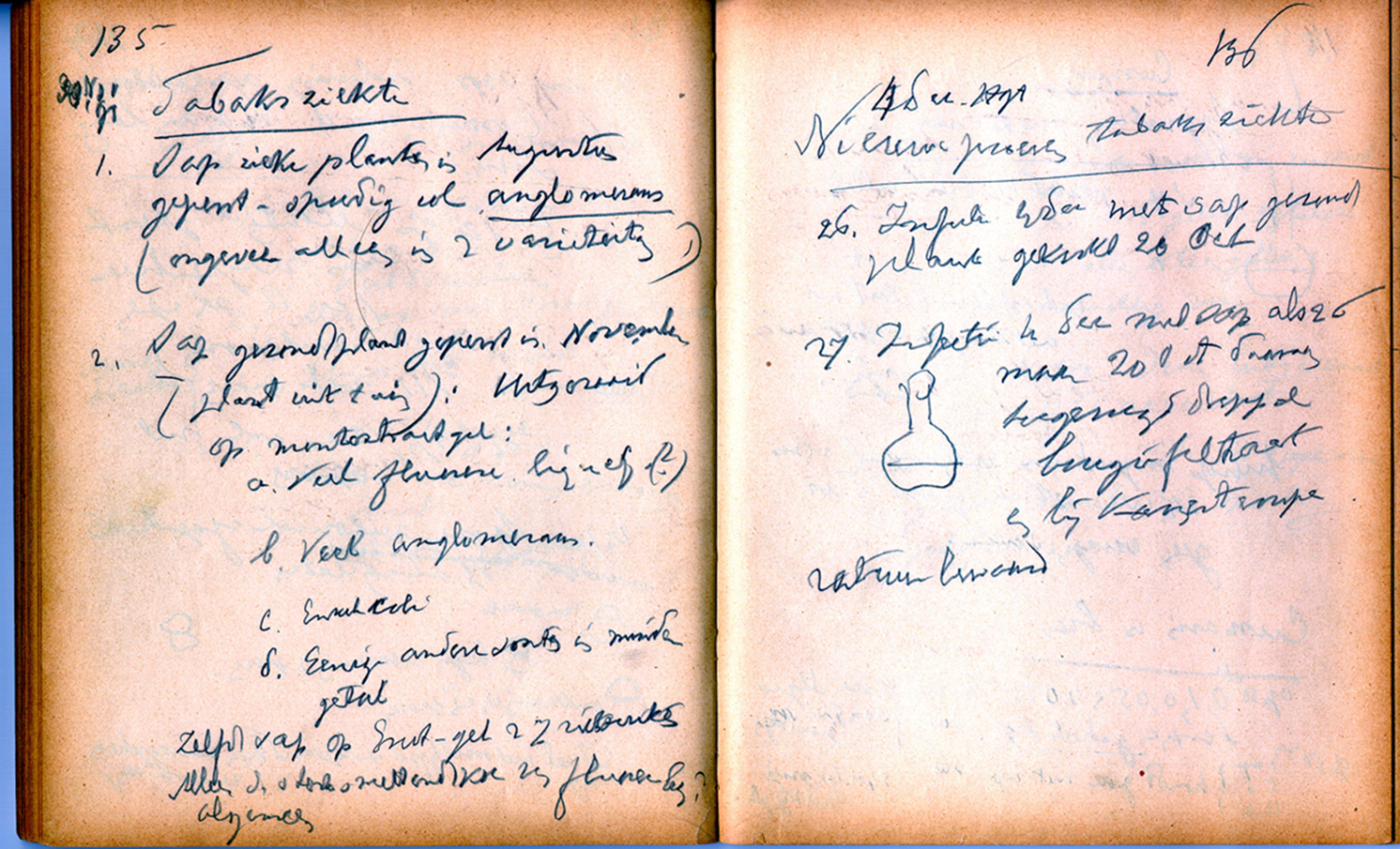Tobacco Mosaic disease, a mysterious infection
It is ironic that one of Beijerinck’s most famous discoveries comes from one of his shortest projects. He was in 1886 asked by Adolf Mayer, Director of the Agricultural Experimental Station in Wageningen, to take a look at tobacco mosaic disease as Mayer was unable to find out what was causing the deformity of the tobacco leaves. It was possibly a chemical or even an unknown bacterium.
Beijerinck grinded the infected leaves into pulp and passed the resulting liquid through Chamberland filters, produced infectious liquid without bacteria. He painted the liquid onto healthy leaves, infecting them. He repeated this procedure several times using new leaves. Could it be a chemical effect? If the disease was caused by a chemical, its effect would get weaker with each repeat, but instead it grew stronger. Heating the liquid to 90°C inactivated it.
A new form of life 'contagion vivum fluidum'
Tobacco mosaic disease was apparently caused by something living because it could reproduce itself and was killed by heat. The mystery infection was too small to see under the strongest microscopes, and could not be grown like bacteria in the laboratory. Beijerinck concluded that this was a new form of life that was too small to see under the microscope, which he called a 'contagion vivum fluidum' or virus.
Father of Virology
Beijerinck published his findings, calling his discovery a 'contagium vivum fluidum', or virus, and turned to other research. Sadly, he did not live long enough to actually see his virus particles under the electroIn 1905n microscope or learn how widespread and important they are. Martinus Beijerinck is often called the Father of Virology.
Center for microbiology
Beijerinck's laboratory grew into an important center for microbiology. Researchers from all over the world came to work here. After the start in Delft, microbiological laboratories opened around the world. New fields of microbiology emerged, such as soil fertility, food production, waste processing and industrial production. Beijerinck was honored for his work with the Leeuwenhoek Medal in 1905. The Leeuwenhoek medal is a science prize that was established in 1877 to commemorate Antoni van Leeuwenhoek's discovery of 'microscopic beings' (little animals).

Tobacco leaves infected with tobacco mosaic virus (TMV), photographed in 1898

Chamberland filters are made from porous glass. They were made in different sizes, and the finest pores could prevent bacteria from passing through. They were held in the neck of a sterile flask with a rubber stopper, and the liquid to be filtered was poured through.

